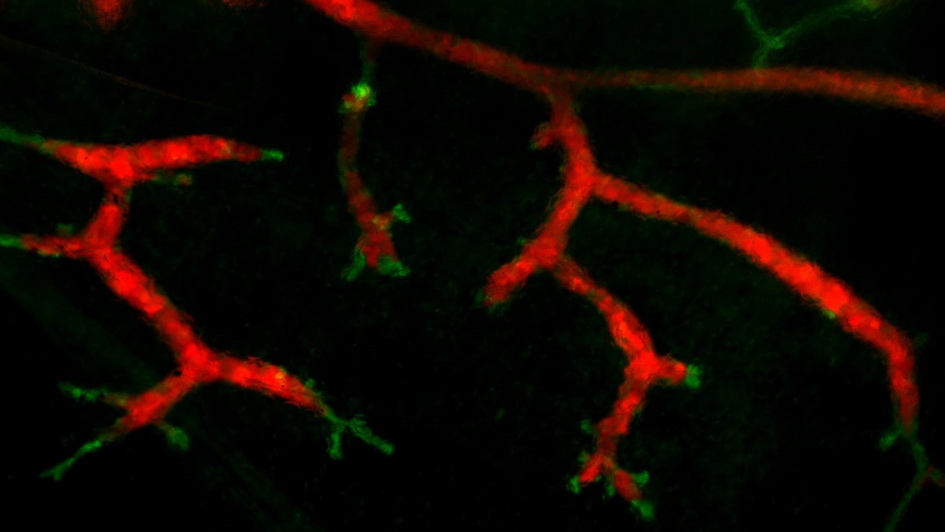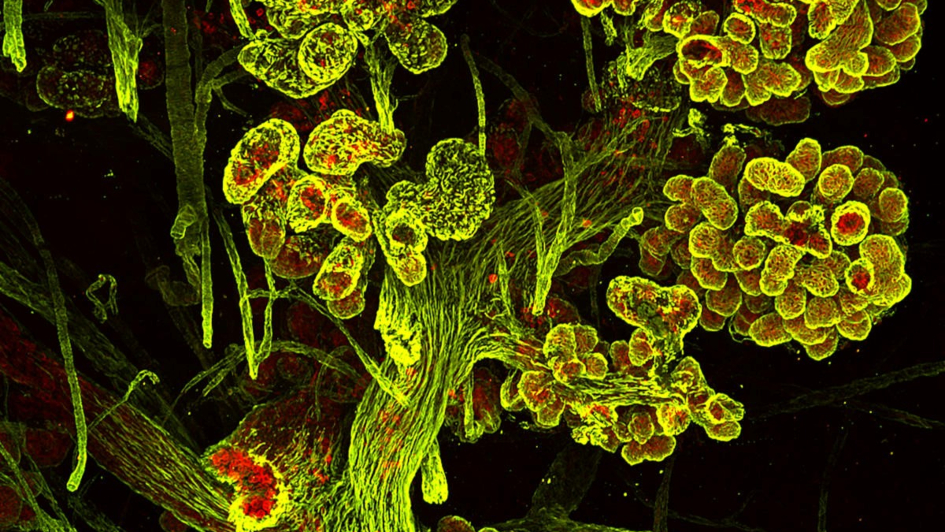
Fluorescence stereograph of a mouse mammary gland 3 months after it was injected with human breast carcinoma cells. The mouse milk ducts are shown in green, the human tumor cells that colonize the mouse ducts are labelled in red. Credit: Patrick Aouad
Breast cancer is the most frequently diagnosed cancer worldwide. More than two thirds of all breast cancers are hormone-sensitive, they express the estrogen receptor and frequently the progesterone and the androgen receptor. They are typically slow growing and respond to endocrine therapy.
Progress in our understanding of the role of hormones and the development of hormone-sensitive tumors in a broader tissue context and under physiologically and clinically-relevant conditions has been hampered by the lack of models.
My group has recently overcome this hurdle and developed experimental approaches that allow us to study normal breast epithelial cells and hormone-sensitive breast cancer cells of different histological subtypes in a complex in vivo context. We achieve this by providing tumor cells with a physiological microenvironment by grafting then into the milk ducts (MIND) instead of injecting them into the subcutaneous fat.
Patient-derived tumor models; xenografts and organoids
The MIND modelling allows not only to grow hormone-sensitive breast cancer cell lines and patient-derived tumor cells with unprecedented engraftment rates but also to study critical stages of disease progression, including metastasis, in clinically-relevant endocrine conditions.
The In Vivo Modelling Group aims to establish a panel of intraductal xenograft models that reflects the clinical complexity of the disease both in terms of tumour subtypes and patient genetic ancestry. It promotes and supports the use of MIND models for preclinical and translational studies and seeks to develop them into tools for co-clinical trials and precision medicine. Through combined efforts with the Patient-Derived Organoids Group we seek to improve on existing approaches in drug discovery.

3D reconstruction of the human breast. In red cytokeratin 7 and in green smooth muscle antigen. Credit: Patrick Aouad